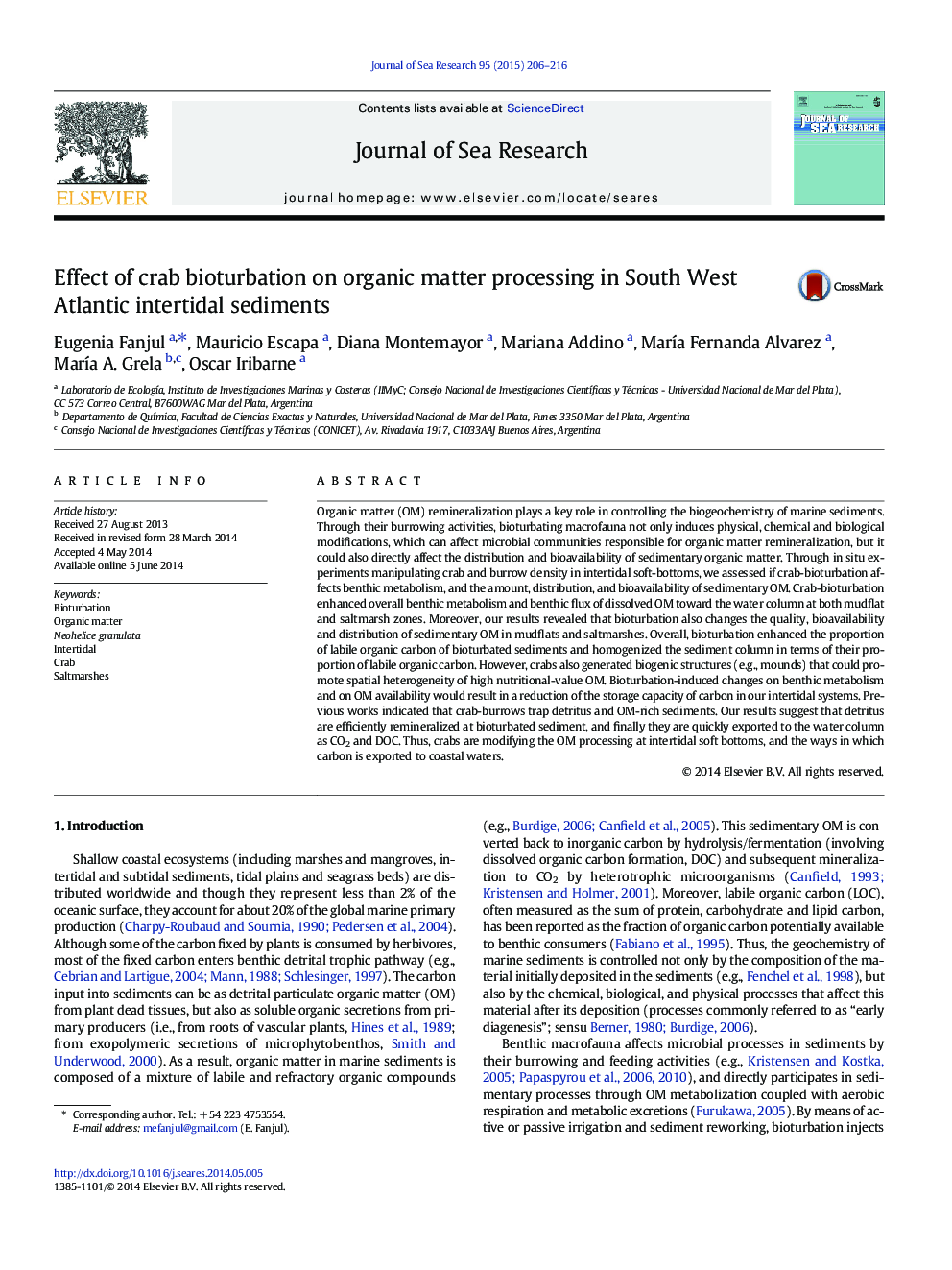| Article ID | Journal | Published Year | Pages | File Type |
|---|---|---|---|---|
| 4549762 | Journal of Sea Research | 2015 | 11 Pages |
•We studied how crab-bioturbation affects organic matter at intertidal soft bottoms.•Crab-bioturbation enhances benthic metabolism and benthic fluxes of organic matter.•Bioturbation affects quality, distribution and bioavailability of sedimentary OM.•Results suggest that crabs modify the ways of carbon export to coastal waters.
Organic matter (OM) remineralization plays a key role in controlling the biogeochemistry of marine sediments. Through their burrowing activities, bioturbating macrofauna not only induces physical, chemical and biological modifications, which can affect microbial communities responsible for organic matter remineralization, but it could also directly affect the distribution and bioavailability of sedimentary organic matter. Through in situ experiments manipulating crab and burrow density in intertidal soft-bottoms, we assessed if crab-bioturbation affects benthic metabolism, and the amount, distribution, and bioavailability of sedimentary OM. Crab-bioturbation enhanced overall benthic metabolism and benthic flux of dissolved OM toward the water column at both mudflat and saltmarsh zones. Moreover, our results revealed that bioturbation also changes the quality, bioavailability and distribution of sedimentary OM in mudflats and saltmarshes. Overall, bioturbation enhanced the proportion of labile organic carbon of bioturbated sediments and homogenized the sediment column in terms of their proportion of labile organic carbon. However, crabs also generated biogenic structures (e.g., mounds) that could promote spatial heterogeneity of high nutritional-value OM. Bioturbation-induced changes on benthic metabolism and on OM availability would result in a reduction of the storage capacity of carbon in our intertidal systems. Previous works indicated that crab-burrows trap detritus and OM-rich sediments. Our results suggest that detritus are efficiently remineralized at bioturbated sediment, and finally they are quickly exported to the water column as CO2 and DOC. Thus, crabs are modifying the OM processing at intertidal soft bottoms, and the ways in which carbon is exported to coastal waters.
